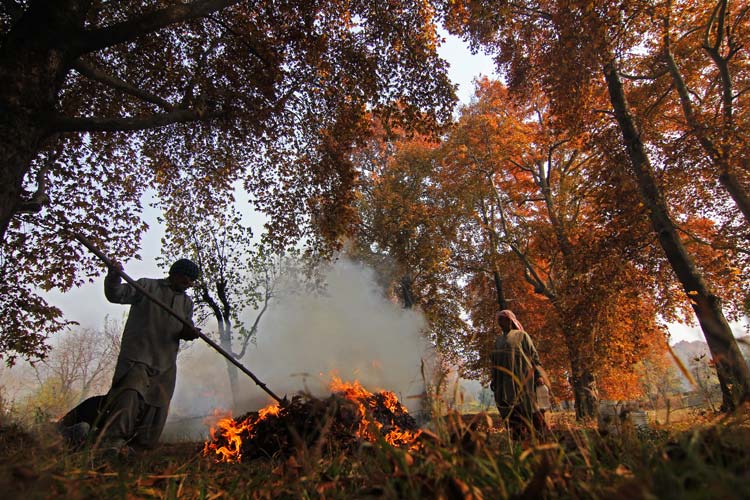Amina Rawat
Prior to the election of the current coalition government of the Conservatives and the Liberal Democrats, Nick Clegg, the leader of the latter political party, promised to scrap university tuition fees. Just seven months later, on December 9, 2010, student riots erupted in central London as the government, including Clegg, voted for an increase in tuition fees from ?3,200 to ?9,000 per annum.
About 50,000 students assembled at the University of London Union and marched peacefully with their banners and shouting slogans. However, a splinter group of about 200-300 caused widespread violence and vandalism smashing the windows of various government buildings and shops, painting graffiti on phone boxes and throwing paint bombs at buses, starting fires including setting alight the benches on Parliament Square, and urinating on the statue of Winston Churchill.
Police officers came under attack with metal barriers hurled at them along with snooker balls, paint balls, poles and fireworks. The police responded by forming lines to block the crowds, striking the protesters with batons and charging at them on horseback. By 3pm the riot police were called in, but the splinter group was on the move throwing rubbish on to the streets from the bins and damaging what they could, along the way.
Then around 7.20pm, along came their booty; the Prince of Wales and Camilla, the Duchess of Cornwall; the royal couple were ambushed as their Rolls Royce was driven into the middle of the demonstrations on the way to the Royal Variety Performance.
 The protesters smashed the rear window, splattered the royal vehicle with white paint jeering and shouting “off with their heads”. One protester managing to jab Camilla in the ribs with a pole through a window that had been accidentally opened. Armed officers were said to be seconds from drawing their weapons.
The protesters smashed the rear window, splattered the royal vehicle with white paint jeering and shouting “off with their heads”. One protester managing to jab Camilla in the ribs with a pole through a window that had been accidentally opened. Armed officers were said to be seconds from drawing their weapons.
I listened to the radio the next morning praising the police for the amount of restraint they employed and for upholding the rule of law in controlling the violence. A comment followed whether, given the level of violence and risks, it would have been appropriate for the police to shoot at the crowds.
As I listened, I could not help thinking that this remark would not even be contemplated in Kashmir where shooting at relatively peaceful protests now appears to be the norm. In the recent spate of violent eruptions since June, spurred by the death of a teenage student killed by a police tear gas shell, at least 110 people have died in demonstrations in Kashmir Valley.
On July 6, three people were shot dead by police as people protested against killings in police firing, on August 30, an 11 year old Kashmiri boy was killed and at least 22 others were injured when Police opened fire at rock throwing protesters, and in mid September, 13 people were killed as Indian police opened fire on protesters, ironically as security chiefs met to discuss whether to withdraw the Armed Forces (Special Powers) Act in four regions of Kashmir.
These are to cite but a few examples where the security forces in Kashmir have been accused of violating the rule of law. Even the Indian Prime Minister Manmohan Singh has questioned the tactics employed by security forces in Kashmir and ordered officials to use “non-lethal, yet effective and more focused measures” in dealing with the protests.
In the evening press the day after the violent student protests in London, the Metropolitan Police Commissioner, Sir Paul Stephenson, was quoted as saying “We could have water cannon. We could have baton charges. We could have a different type of democracy.” Indeed we could have, a ‘democracy’ like in Kashmir I thought.
The police commissioner, the government, the leader of the student’s union, along with the public condemned these violent protests which, so far, have been the most dramatic expression of the public’s anger over the coalition government’s cuts in the current era of Britain’s economic recession. However, despite the drama and the headlines it attracted, it achieved nothing; on December 14, the House of Lords backed the rise in tuition fees, anyway, by a clear majority.
If the violent behaviour of the students has been spurred by the frustrations caused by the rising number of unemployed youth, mounting debts and now a bleaker future with the rise in tuition fees, it is hardly surprising then that the youth in Kashmir, who have faced similar predicaments in addition to years of suppression by anti-terrorism laws, disappearances and violent killings, would able to restrain themselves from expressing their anger in non-peaceful ways.
True, violence may attract headlines and make the plight of people better known, but it also gives the government and security forces more of an excuse to enhance their security measures and in Kashmir to justify their anti-terrorism laws and shoot at protesters.
It leads to a vicious circle where violence begets violence. Thus, one has to exercise his/her inner strength to refrain, to step back and not act impulsively; if necessary have one’s hands tied behind. And if the security forces still shoot then no one would have the right to condemn the protesters and it would be a story which I am sure would attract many more headlines.















